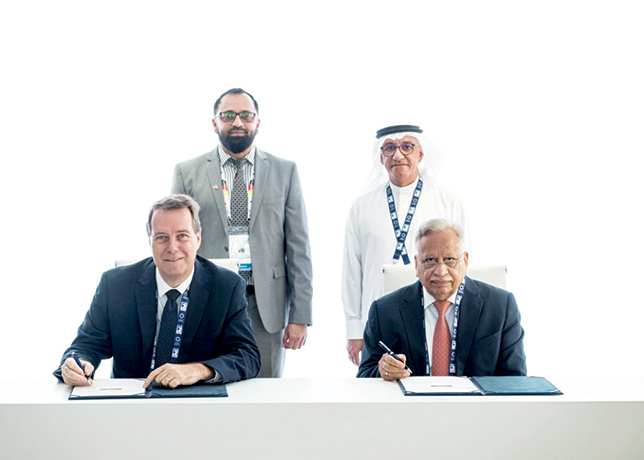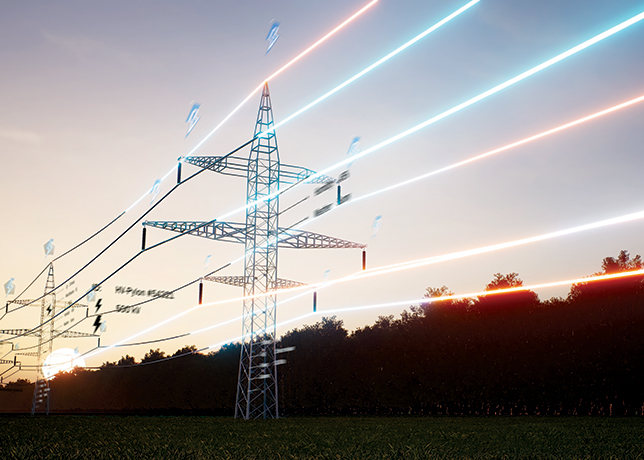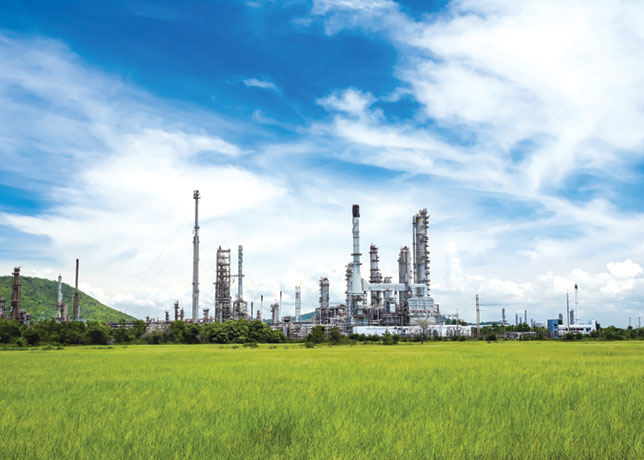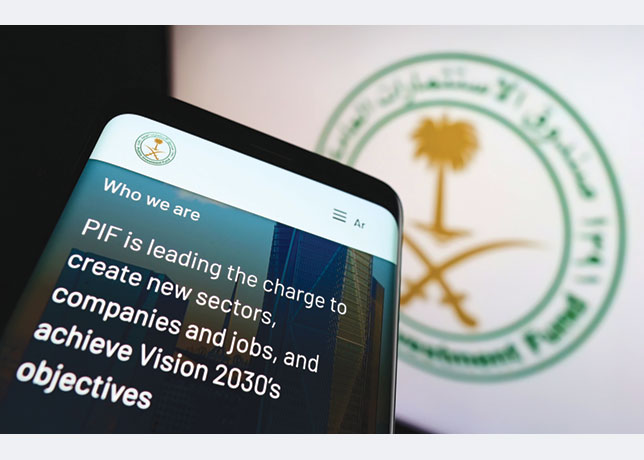
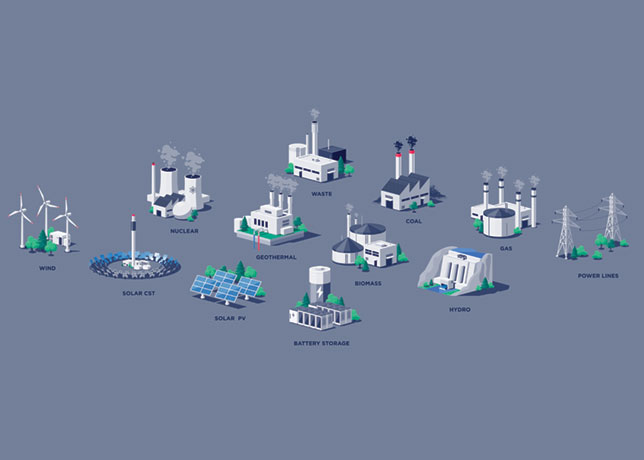 KSA aims to achieve an optimal energy mix for electricity production
KSA aims to achieve an optimal energy mix for electricity production
Moving away from its historical reliance on oil, the Kingdom is forging a path towards a more diversified energy-efficient future, in line with Vision 2030 and SGI, Ronan Tregouet, Vice-President, Energies and Chemicals for Middle East and Central Asia, Schneider Electric, tells OGN
In its capacity as the leading producer of crude oil among Opec member states, Saudi Arabia has a critical case to build as it attempts to drive an orderly energy transition.
At the start of COP28 last year, Prince Abdulaziz bin Salman, Saudi Arabia’s Energy Minister, reiterated that energy is fundamental and there is no value in stigmatising the industry as the global demand for hydrocarbons remains essential.
Energy transitions take time, effort, and judicial use of resources at our disposal; and, Saudi Arabia brings to the table a compelling action plan for decarbonisation.
Decarbonisation in Saudi Arabia is not just a policy shift, it's a paradigm shift.
Moving away from its historical reliance on oil, the Kingdom is forging a path towards a more diversified energy-efficient future, in line with forward-looking strategies such as the Saudi Vision 2030 and the Saudi Green Initiative (SGI).
DIVERSIFYING ITS ENERGY MIX
The Kingdom has set in place an ambitious objective to diversify its energy mix and reduce its carbon footprint, aiming to produce 50 per cent of its electricity from renewables by 2030.
Furthermore, Saudi Arabia has launched a series of initiatives to stimulate renewable energy and reduce reliance on oil.
An example is the National Renewable Energy Program, which aims to add 27.3 gigawatts (GW) of renewable energy capacity by 2024, with a final target of 58.7 GW by 2030, in line with the Kingdom’s goal to reach 130 GW of renewable energy.
This target is backed by more than 80 initiatives in the public and private sectors, with investments exceeding $188 billion.
Net-zero by 2060 is an ambitious yet achievable plan for Saudi Arabia. However, achieving decarbonisation in the Kingdom involves more than just switching from fossil fuels to renewables, as it calls for a significant overhaul of our entire energy system.
The Kingdom, while fully aware of the substantial challenges that lie ahead, is undeterred in its commitment to forge a path that aligns with the evolving global discourse on environmental responsibility.
Saudi Arabia plans to invest approximately $266 billion in cleaner energy, encompassing a range of initiatives to not only generate renewable energy but also to add transport lines and distribution networks, with an aim to eventually export energy globally and produce clean hydrogen.
 |
Tregouet ... decarbonisation in KSA is a paradigm shift |
This investment is a cornerstone in the country's strategy to diversify its energy mix and move towards a more sustainable future.
The remarkable pace and progress of Saudi Arabia's decarbonisation efforts showcase a powerful intent and strong commitment towards climate action.
This rapid transformation, spearheaded by visionary projects such as NEOM, Qiddiya and The Red Sea Project, signifies a deep commitment to climate initiatives and a shift towards sustainable urban living.
Saudi Arabia’s vision is not just about adopting renewable energy but also about reimagining the future of urban living and energy consumption.
These initiatives reflect a deep understanding of the urgent need for environmental stewardship and a clear vision for a sustainable future.
For companies operating in the Kingdom and the broader region, this shift brings about a new era of opportunities.
The move towards renewable energy and sustainable practices isn't just a policy change; it's a paradigm shift that redefines the business landscape.
Companies that align with this green vision will likely find themselves at the forefront of innovation and growth.
In fact, Saudi Arabia's overall GDP is forecasted to expand by 4.4 per cent in 2024, driven primarily by the non-oil sector.
This growth is attributed to higher consumer spending and other non-oil activities, indicating a healthy economic condition for the kingdom.
The Kingdom is also focusing on achieving an optimal energy mix for electricity production, aiming for a 50 per cent renewable energy mix by 2030.
This strategy includes replacing up to one million barrels of equivalent liquid fuel currently used for power generation.
Schneider Electric Sustainability Research Institute’s report puts forth 12 energy service transformations to decarbonise the energy landscape of Saudi Arabia, including digitalisation of living environments, disruptive changes in construction, electrification of mobility and industrial processes, and circularity.
Schneider Electric has taken significant steps to support Saudi Arabia's Vision 2030 and its goal to diversify its economy and reduce its dependence on oil.
The company recently acquired a license from the Saudi Ministry of Investment and Commerce to set up its regional headquarters in Saudi Arabia.
The Kingdom’s commitment to decarbonisation, including the goal to generate 50 per cent of its electricity from renewables by 2030, is creating substantial opportunities in the renewable energy sector.
The country's focus on solar energy, exemplified by the construction of the world's biggest single-site solar-power facility, signals a significant shift towards renewable energy sources.
DECARBONISATION
This shift is part of a larger strategy that includes a circular carbon economy, aiming to reduce emissions from oil and gas production, and a significant investment of at least $270 billion in low-carbon energy projects by 2030.
While the country is making strides towards decarbonisation, it also plans to increase oil production and export.
This dual approach highlights the complex nature of transitioning from a fossil fuel-dependent economy to a more diversified one.
For energy companies, the transition to a low-carbon future involves more than just switching from fossil fuels.
It includes measures like reducing carbon emissions through non-emergency flaring elimination, electrifying upstream facilities with low-emissions electricity, and expanding the use of carbon capture, utilisation, and storage (CCUS) technologies.
These steps are part of a broader strategy to diversify company portfolios with various assets related to sustainable energy sources and innovative technology.
The transition to a sustainable future is challenging yet crucial. The industrial sector, accounting for nearly half (around 46 per cent) of the country’s total emissions, plays a pivotal role in this shift.
Saudi Arabia's journey towards decarbonisation sends a powerful message that even the most oil-reliant nations can pivot towards a more sustainable future through collaboration at the global level and substantial investments towards renewables - with the private sector as a crucial catalyst in this transformative journey.
By Abdulaziz Khattak




















